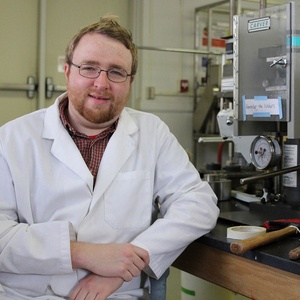Bioplastics from certain proteins show antibacterial properties




Cal Powell, University of Georgia
April 1, 2015
BY University of Georgia
Bioplastics made from protein sources such as albumin and whey have shown significant antibacterial properties, findings that could eventually lead to their use in plastics used in medical applications such as wound healing dressings, sutures, catheter tubes and drug delivery, according to a recent study by the University of Georgia College of Family and Consumer Sciences.
The bioplastic materials could also be used for food packaging.
Researchers tested three nontraditional bioplastic materials—albumin, whey and soy proteins—as alternatives to conventional petroleum-based plastics that pose risks of contamination.
In particular, albumin, a protein found in egg whites, demonstrated tremendous antibacterial properties when blended with a traditional plasticizer such as glycerol.
"It was found that it had complete inhibition, as in no bacteria would grow on the plastic once applied," said Alex Jones, a doctoral student in the department of textiles, merchandising and interiors. "The bacteria wouldn't be able to live on it."
Advertisement
Advertisement
The study appears in the online version of the Journal of Applied Polymer Science.
One of the researchers' aims is to find ways to reduce the amount of petroleum used in traditional plastic production; another is to find a fully biodegradable bioplastic.
The albumin-glycerol blended bioplastic met both standards, Jones said.
"If you put it in a landfill, this being pure protein, it will break down," he said. "If you put it in soil for a month—at most two months—these plastics will disappear."
The next step in the research involves a deeper analysis of the albumin-based bioplastic's potential for use in the biomedical and food packaging fields.
Advertisement
Advertisement
As noted in the study, 4.5 hospital admissions out of every 100 in the U.S. in 2002 resulted in a hospital-acquired infection. In addition to the risk of contamination in hospitals, food contamination as a result of traditional plastics is a notable risk.
Researchers are encouraged by the antimicrobial properties of albumin-based bioplastics that could potentially reduce these risks through drug elution—loading the bioplastic with either drugs or food preservatives that can kill bacteria or prevent it from spreading.
Study co-authors are Suraj Sharma in the department of textiles, merchandising and interiors and Abhyuday Mandal in the department of statistics, who aided in the statistical analysis and discussion.
The study, "Protein-based bioplastics and their antibacterial potential," is available online athttp://onlinelibrary.wiley.com/doi/10.1002/app.41931/abstract.
Related Stories
The U.S. Department of Energy Bioenergy Technologies Office (BETO) announced up to $23 million in funding to support research and development (R&D) of domestic chemicals and fuels from biomass and waste resources.
The U.S. DOE has announced its intent to issue funding to support high-impact research and development (R&D) projects in two priority areas: sustainable propane and renewable chemicals and algal system cultivation and preprocessing.
Sens. Sherrod Brown, D-Ohio, and Pete Ricketts, R-Neb., in August introduced the Renewable Chemicals Act, a bill that aims to create a tax credit to support the production of biobased chemicals.
The Chemical Catalysis for Bioenergy Consortium, a consortium of the U.S. DOE’s Bioenergy Technologies Office, has launched an effort that aims to gather community input on the development of new biomass processing facilities.
USDA on March 8 celebrated the second annual National Biobased Products Day, a celebration to raise public awareness of biobased products, their benefits and their contributions to the U.S. economy and rural communities.
Upcoming Events










